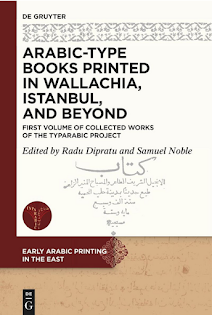Joe Glynias, "Byzantine Monasticism on the Black Mountain West of Antioch in the 10th-11th Centuries," Studies in Late Antiquity 4.4 (2020), 408-451.
Abstract:
This article sheds
light on a hitherto unexplored phenomenon that alters our picture of
Byzantine monasticism: the monastic culture of the Black Mountain
outside Antioch. From 969-1084, the Black Mountain thrived as a
destination for a variety of Chalcedonian monks: Greek-speaking Romans,
Arabic-speaking Melkites, Georgians, and Armenians. I illustrate the
prosperity of monastic life on the Black Mountain, the scholarly
activity flourishing in and between languages, and the networks
connecting the mountain to monasteries inside and outside of Byzantium.
In
this paper, I examine three bodies of source material: manuscripts
produced at the Black Mountain, texts produced by its scholars, and the
letters of Nikon of the Black Mountain. Colophons in Greek, Arabic,
Syriac, and Georgian manuscripts display the active scribal culture of
these monasteries. Scholars centered at St. Symeon produced scores of
translations from Greek into Arabic and Georgian that illustrate the
lasting impact of this multilingual intellectual atmosphere. Nikon’s
letters provide the basis for a cultural history of Antiochene
monasticism. From these and other sources, I show that the Black
Mountain was a major hub in middle Byzantine monastic networks. At the
same time when Athos was assuming a primary role in the western Orthodox
monastic world, the Black Mountain was performing a similar function in
the east.
Read the whole article here.







